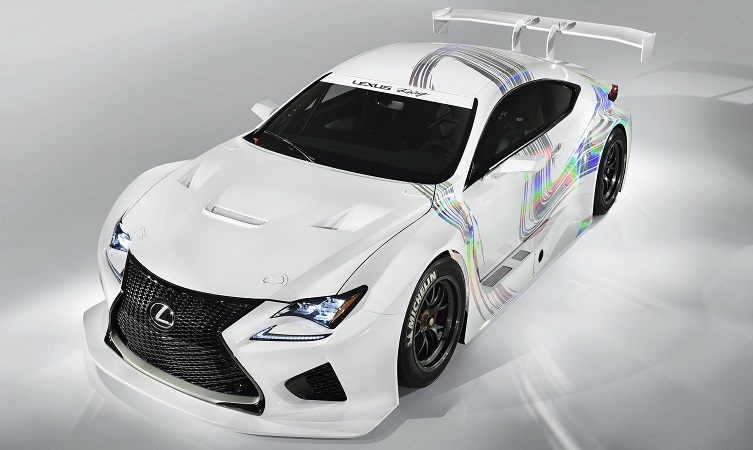The Lexus RC F GT3 was a product three years in the making, and provided a clear indication of our intention to engineer a car to support GT3 sports car racing.
Unveiled to the world in concept form (main image) at the Geneva motor show in March 2014, the celestial-looking RC F GT3 prototype was a joint development project between Lexus International and in-house motorsport tuning subsidiary Technocraft. The latter was also commissioned to build customer vehicles to order and provide on-going technical support.
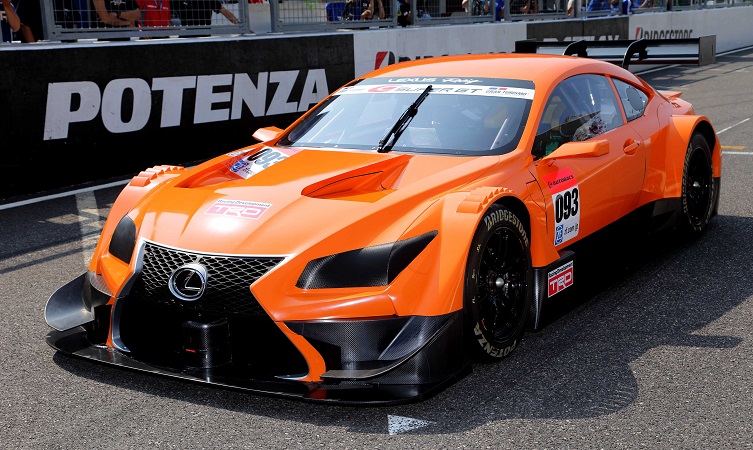
The first evidence that an RC F-based race car was being developed was actually revealed to the Japanese domestic market in August 2013, when the bright orange and wide-bodied RC F test vehicle seen above was revealed at the last event of the year’s Super GT season. That car would go on to see early success in the 2014 season in the hands of the factory-supported Petronas TOM’S and KeePer TOM’S teams.
While the dramatic RC F GT3 concept was similar in appearance and specification, it was built to comply with the FIA’s GT3 category regulations. These made the car eligible to compete in a number of worldwide series, including the Nürburgring 24 Hours and the SportsCar Championship in the USA.
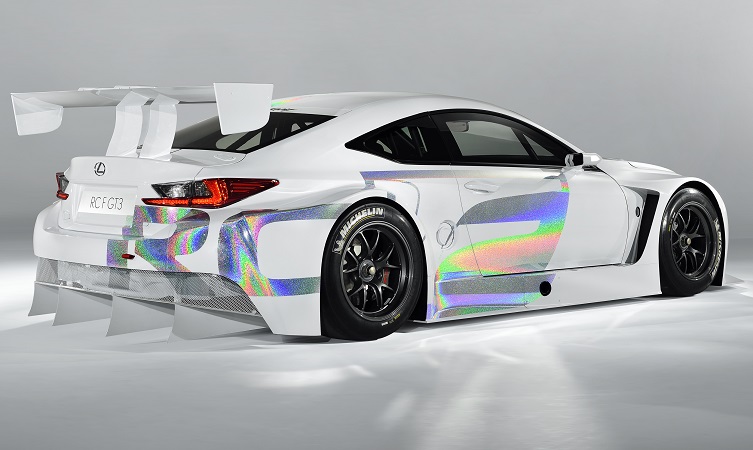
It measured 4705mm in length, was 2000mm wide, 1270mm high and had a 2730mm wheelbase, which made it significantly wider and lower than a standard RC F. Thanks to a stripped-out interior and extensive use of purpose-built, dry carbon fibre composite body panels, the GT3 was also much lighter, tipping the scales at just 1,250kg. Under the bonnet was a modified version of the RC F’s 5.0-litre V8 engine, developing some 533bhp.
Soon after its reveal, around 30 race teams from Europe, Asia, Japan and the United States registered interest with Lexus about running the car. Arrangements were therefore made to supply vehicles in time for entry in the 2015 racing season, so beginning a long-term commitment to GT3 racing by Lexus.
Lexus RC F in motorsport: 2015
Six motorsport-prepared Lexus RC F models enrolled in the top GT500 class in the pan-Asian Super GT series. However regulations dictated their use of a 2.0-litre, four-cylinder engine (known internally as the R14AG) instead of the specially tuned version of the F marque’s V8.
A number of GT3-specification cars were built by Technocraft for customers in Japan and Europe. One of these early adopters was the Swiss-based Emil Frey Racing team, which also provided UK enthusiasts with their first opportunity to experience the car’s dynamics in a high-speed blast up the hill at the Goodwood Festival of Speed.
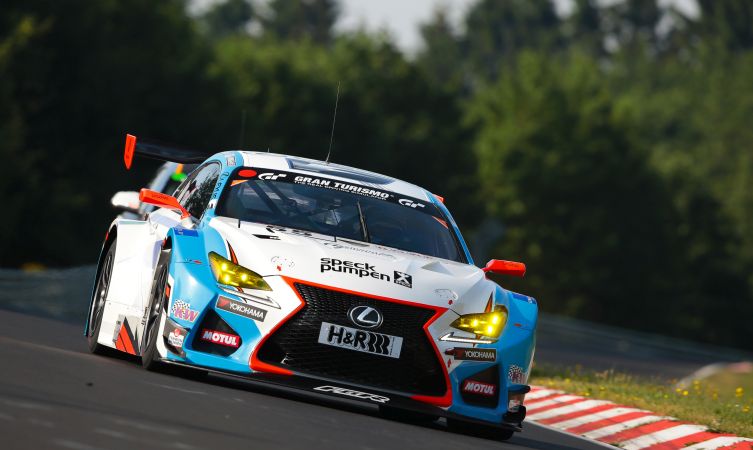
In July, the independent Emil Frey Racing and Farnbacher Racing (above) teams underlined the competition credentials of the Lexus racer with class victory in Germany’s VLN endurance series at the legendary Nürburgring circuit. This European debut was swiftly followed-up by a podium position in the fifth round, a result that meant Lexus was the first Japanese manufacturer to secure a podium finish in the championship since 1979.
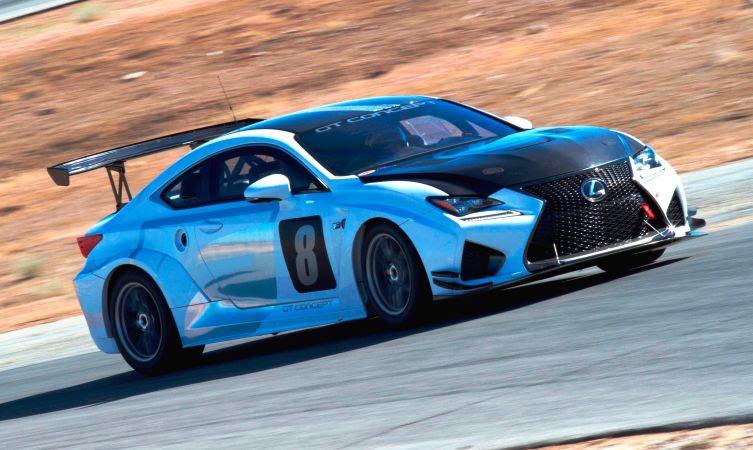
Meanwhile, on the other side of the Atlantic, British driver Justin Bell muscled a uniquely prepared RC F GT Concept (above) to a podium finish in the famous Pikes Peak International Hill Climb. Then in November’s SEMA aftermarket spectacular, the Stateside audience also got their first chance to see the RC F GT3 prepared by the newly formed F Performance Racing Group (below) for competition in the North American IMSA sports car series in 2016.
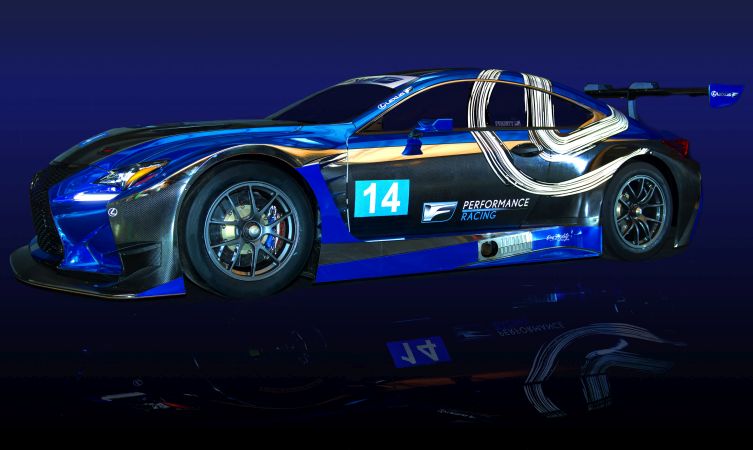
Lexus RC F in motorsport: 2016
Repeating the entry list from the year before, six RC F models entered the top GT500 tier of Japan’s Super GT race series. The car dominated the category, with Team SARD and drivers Heikki Kovalainen and Kohei Hirate respectively claiming the team and drivers’ championship titles. It was a fitting finale as the new LC 500 replaced the RC F in the GT500 class in 2017.
In North America, the small window of opportunity to align the vehicle with IMSA safety and performance regulations unfortunately made it impossible to compete in 2016. Nevertheless, a multi-year commitment was made to ensure the GT3’s presence in the GT Daytona class through to the 2018 season.
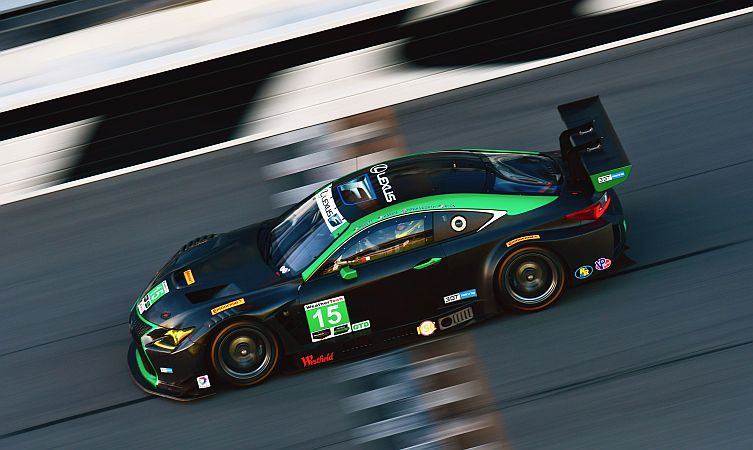
Before the year was up, however, the RC F GT3 made its official US track debut in a pair of test days at Daytona International Speedway in preparation for the opening event of 2017.
Lexus RC F in motorsport: 2017
While 2016 was a quiet, foundation-laying year for the RC F GT3, it was all systems go for 2017. The onslaught began with the official unveiling of the stealthy, all-black 2017 Lexus RC F GT3 – now fully homologated by the FIA and therefore publicised without any ‘concept’ or ‘prototype’ suffixes.

The first race of the year was the Rolex 24 at Daytona, USA, where two RC F GT3s run by the new 3GT Racing secured mid-table results. Though it would have been nice for Lexus to win its class in its return to racing in North America, the team consoled itself with setting the fastest lap time – another positive indication of the car’s potential. Slowly but surely the results improved over the course of the year, including the first top-five finish and the first class pole position.

Back in Europe and with the RC F GT3 now fully homologated, Farnbacher Racing and Emil Frey Racing were allowed to progress from the SPX class of the VLN Endurance series and compete at a higher level. This began with selected GT3 events in the International GT Open series, where the RC F immediately stormed to four wins in the first four races before the organisers adjusted each car’s balance of performance.
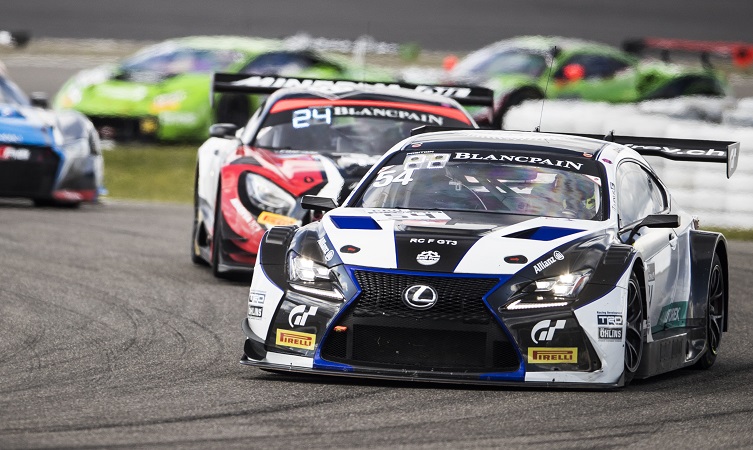
The RC F GT3’s UK race debut at Silverstone went similarly well, with the Emil Frey Racing team securing a double-podium – a result that was used to leverage the team’s fast-track into the prestigious Blancpain GT Series.
Lexus RC F in motorsport: 2018
The 2018 season began with positive news that the privately run Emil Frey Racing team would campaign a pair of Lexus RC F GT3 models in all ten rounds of the Blancpain GT Series, which included back-to-back UK events at Brands Hatch and Silverstone.
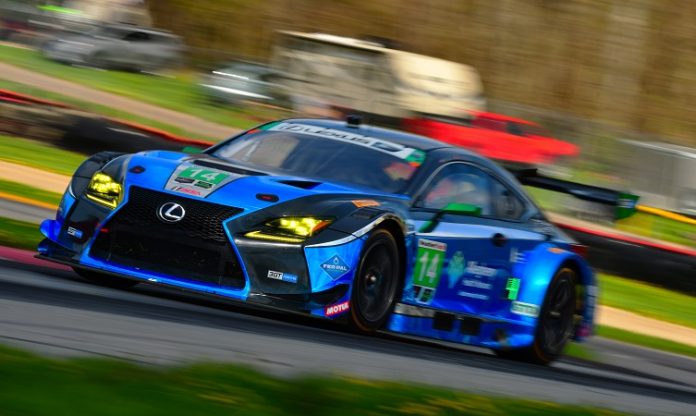
Valuable points and a best-ever qualifying result were gained in round three at Brands Hatch. But of greater note was that on the very same May weekend the RC F GT3 scored its inaugural IMSA victory in North America. Two weeks later at Silverstone, the European campaign was rewarded when the #114 car took its first podium of the Blancpain championship after a heart-racing final few laps.
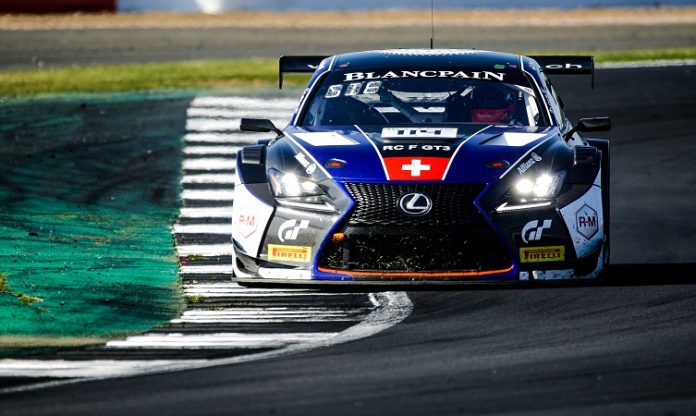
The following month, Emil Frey Racing bettered the rest at the Paul Ricard circuit in the South of France. Driver Alberto Costa Balboa took the lead just half a lap from the chequered flag in an historic yet nail-biting finish to the six-hour endurance race. Later races of the season, such as those at Misano and Spa, served to consolidate rather than improve the team’s overall position.

Which left the team’s hopes resting on the final race in Barcelona to lift the Endurance Cup. In the end, it wasn’t to be. However, a highly creditable third place in the championship was a fantastic result for an inaugural season.
A similar result was experienced by the 3GT Racing team, where an outstanding class victory – the second of the season – in Virginia raised hopes for the championship. Unfortunately, and despite the team’s best efforts, mid-table results in the remaining two races meant the team descended the order and finished fifth in class.
Lexus RC F in motorsport: 2019
It’s too early to offer an overview of the RC F GT3’s performance this year but we are delighted to report that Lexus will partner with the newly formed Aim Vasser Sullivan team to campaign two cars in the GTD class of the 2019 IMSA WeatherTech SportsCar Championship.
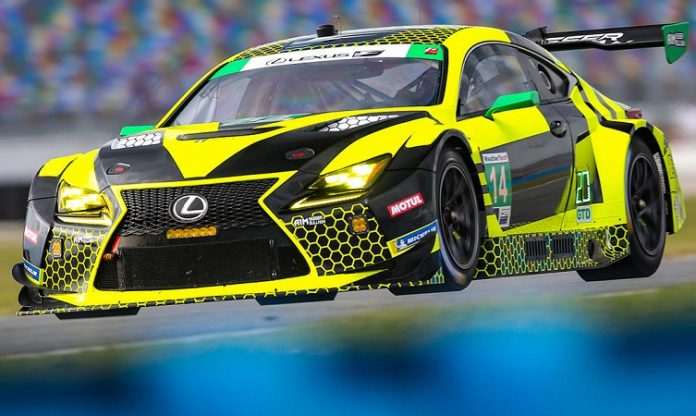
Learn more: The motorsport milestones of Lexus
